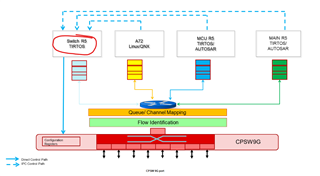Other Parts Discussed in Thread: TDA4VH,
Hi,
my customer has a couple of questions regarding TSN (Time-Sensitive Networking) features for TDA4VM and TDA4VH:
- Is there any documentation available for using and configuring TSN on QNX, Linux and FreeRTOS?
- Are there any examples for TSN within the SDK for TDA4VM?
- Could you please provide us with a roadmap for TSN features?
- Does TSN features supported on CPSW9G in TDA4VH is same for the TDA4VM?
Regards,
Jon


